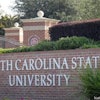BALTIMORE — When Coppin State University officials told a group of incoming freshmen they had to attend a six-week summer pre-college program before enrolling this fall, the idea of more school was the last thing on some students’ minds.
“I had no intention of going” to the mandatory orientation, says Devin McKeiver, a 21-year-old freshman. He grew up near the college, had already lined up a summer job and didn’t like the idea of having to leave home.
Indeed, the Summer Academic Success Academy (SASA) was no party. The academy required the 184 students identified as needing remedial work to awaken by 7 a.m. and sustain themselves each day through classes, tutoring and study hall, with some recreation and cultural events mixed in, until 10 p.m. The prize for the survivors: a better chance of making it in college, earning a degree and getting employment.
“It was amazing, a good jump-start for me,” says freshman Jetta Coleman, 21, of Las Vegas. “Just getting used to campus life. You have (those) six weeks to be on your own and be responsible for yourself.”
In retrospect, says McKeiver, SASA gave him a head start on college. He says the academy helped him pass remedial English and math classes after he tested poorly on placement exams.
While Coppin State has offered summer bridge programs for years as an optional tool for students seeking a leg up, this year was the first time the administration mandated attendance for remedial students. Coppin State’s new initiative, an effort to improve its 20 percent graduation rate, contributes to a growing national trend among colleges to boost their retention and graduation efforts. They are acting on research that shows students have a greater likelihood of staying in school and graduating if deficiencies—academic and financial—are addressed early and vigorously. The efforts are at various schools but especially at those with low graduation rates and those that have traditionally focused on low-income, first-time college students with academic achievement deficiencies dating to high school or earlier.
“College is not the 13th grade,” says Dr. Reginald Ross, Coppin State’s vice president for enrollment management, sounding an assessment offered by many interviewed. Ross says the summer academy “is rigorous,” but it “prepares students for the rigors of a college education. Cost is really a minimal issue if we retain our students.”
In a bold step, Coppin, which covered the $3,500-per-student cost for tuition and on-campus room and board for SASA, plans to make the bridge academy a requirement for all incoming freshmen—more than 500 students—next summer, Ross says.
Investing In Success
The moves by Coppin and others come at a time when donors and politicians are demanding more bang for the shrinking amount of dollars they steer toward higher education. According to the College Board’s review of data from the Organization of Economic Co-Operation and Development, the U.S. ranks 12th out of 36 nations in terms of postsecondary attainment among citizens 25 to 34 years old. “For this key demographic group, Canada, Korea, the Russian Federation, Japan, New Zealand, Ireland, Norway, Israel, France, Belgium and Australia have managed to leap ahead of the United States, while Denmark and Sweden are close to parity with the United States,” reads the College Board website. Completion is the mantra since President Barack Obama challenged higher education by setting an ambitious goals for 60 percent of U.S. adults to have some form of a college degree by 2020.
Schools are investing heavily in retention and graduation efforts, despite the sagging economy, which is forcing hefty budget cuts in other areas of higher education. Their almost intrusive, but necessary efforts range from mandatory academic advising to providing extra help overcoming financial aid problems that prevent students from persisting to early career counseling to keep students’ eyes on the post-college employment prize.
In North Carolina, the retention efforts of historically Black Elizabeth City State and North Carolina Central universities earned praise in a recent report by the Southern Regional Education Board. Both schools have graduation rates of about 49 percent and are working to raise them.
NCCU raised its admission standards in hopes of reducing the number of students who enter college without the basics needed to complete it. NCCU has also put $400,000 into a new “Centennial Scholars” program aimed at improving retention of African-American males. This new initiative, which enrolled 300 African-American men in the pilot phase this year, comes on the heels of a reworked “University College” for freshmen and sophomores in which emphasis is placed on early intervention with students who show signs of being at risk of failing in college.
“It costs more to lose students than make this investment and retain the students,” say Dr. Kevin D. Rome, NCCU vice chancellor for student affairs and enrollment management, explaining the rationale for putting more dollars into retention and graduation efforts.
To keep retention and graduation at the forefront at the University of North Texas at Dallas, the former satellite campus of the University of North Texas that opened this fall as an independent school, recruiting, enrollment, financial aid and career planning will be restructured under one department. Early parental involvement will be key to the diverse commuter school’s plans, says Dr. Frank Ross, associate vice chancellor for student excellence.
“Too many schools have these people at separate tables,” Ross says. “We’re going to develop a parent-family program to serve the students and families.”
At Oregon State University, the state’s land-grant college with 24,000 students, new retention efforts abound. Starting this fall, the school began an “early-alert system” that identifies students with a high number of class absences or who have not done well on early assignments. They are targeted for special attention from teachers, advisers and counselors. The new Chemistry Foundation Learning Community offers 300 students taking 200-level chemistry or higher peer tutoring, individual academic counseling every two weeks from a staff member, and a success-skills course for two credits that teaches them the necessary skills to succeed in their chemistry courses. Oregon State has also expanded the number of peer-tutoring opportunities for students in freshman residence halls.
At Cleveland State University in Ohio, which has a graduation rate of approximately 60 percent, school officials have strengthened the AHANA (African-American, Hispanic, Asian and Native American) peer-peer mentoring program to include full-time staff who help hold workshops and other programs for students of color. Advising has been decentralized and has been “discipline-focused” so more students can get counseling from professionals who have a deeper understanding of students’ fields of study.
Similarly, in an effort to push students across the finish line, Coppin State prevents upperclassmen from signing up for courses until they’ve met with an adviser to make sure they’re not wasting time on unnecessary classes.
“Looking at graduation and our changing demographics, we’re not going to be where President Obama … wants us to get if we continue to do the same things,” says Dr. Njeri Nuru-Holm, vice president for institutional diversity at Cleveland State, noting the students likely to help Obama reach his ambitious college completion goals will be working adults, older adults, low-income residents, minorities and first-generation college students.
“You’ve not only got to put the strategy in place, but the human and fiscal resources,” Nuru-Holm says.
Even schools with high retention and graduation rates are stepping up their games. Atlanta’s Spelman College, which boasts a graduation rate of 81 percent, has revamped its first-year experience program from large assembly-hall gatherings to sessions of 18 to 20 students led by an adviser every Thursday. Spelman also has started a monthly newsletter aimed at giving parents information about academic requirements and has created a website that provides parents with an idea-exchange forum. Its career center has started a program called FRESH that expands career planning activities to freshmen.
“The focus of education has changed over time,” says Dr. Desiree Pedescleaux, dean of undergraduate studies at Spelman. “My grandmother used to say you go to school to get knowledge to further yourself. Now, students are coming to school for careers. It’s not just learning for learning’s sake. It’s a very different environment.”
Staying the Course
Early intervention and “intrusion,” such as getting a peer, teacher or adviser to approach the student at the first sign of trouble, appear to be a motto for schools beefing up their efforts, as research finds students with academic deficiencies or who get into academic trouble are more likely to survive if given help early. That is true today even on the financial front, as a family’s inability to pay for college becomes a larger part of a student’s collegiate challenge.
Spelman, for instance, has hired an additional financial aid officer to help students and parents find money needed to stay in school, as the financial resources of many parents and guardians diminish and loan options disappear in this sagging economy.
“Our students are vulnerable in their self-confidence” on a lot of fronts, says Dr. Susie Brubaker-Cole, associate provost for academic success and engagement at Oregon State and a former college dropout. “If we intervene early, we can avoid a really catastrophic blow to their self-confidence and sense of belonging. But they are ashamed or afraid to ask for help because they think that’s a sign of failure. Success is never a solitary enterprise.”
Moving the retention and graduation needle forward, or even holding the line, won’t happen overnight, say those implementing the new initiatives. Early signs are encouraging, however, and educators say they have no choice. The pressure is on.
“As a public institution, we need to act more like private institutions,” says Ross. “They do lots of hand holding. Coppin State students can ill afford not to complete. Students who don’t stay the course lose. For our students, the ticket is always going to be education.”



















